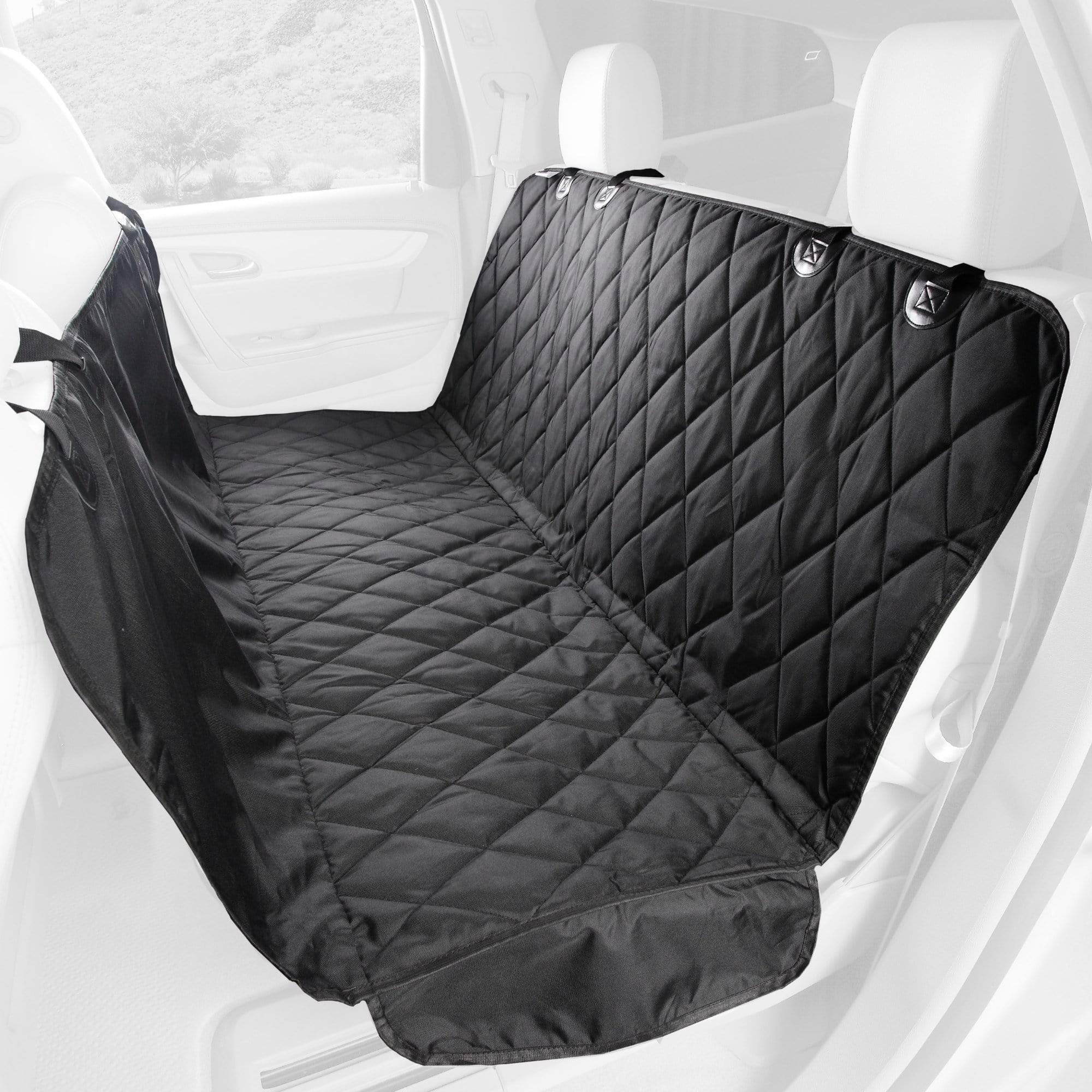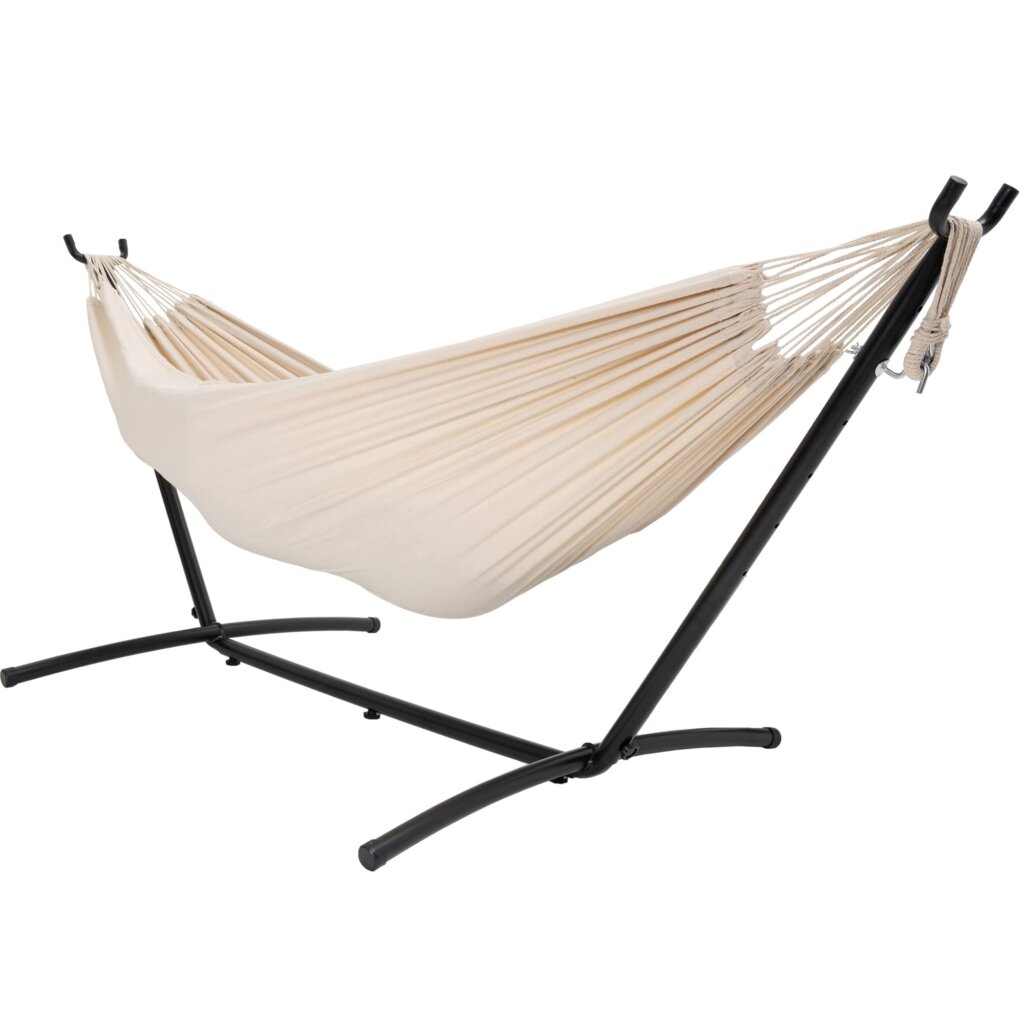- 8 Airplane Footrest Hammock!Travel comfortably - October 9, 2023
- top 7 Pool Float Water Hammock for a Relaxing Summer - October 9, 2023
- top 5 Space SaverSingle Hammock Stand Maximize Comfort and Space - October 9, 2023
Yes, hammocks are machine washable. Proper care should be taken when washing, such as removing carabiners and slings and using a gentle, cold-water setting.
It is recommended to air dry the hammock in a warm and non-humid environment.
Factors To Consider Before Machine Washing
Machine washing hammocks may seem like a convenient option, but before tossing your beloved hammock in the washing machine, there are a few important factors to consider. Taking these factors into account will help prevent damage to your hammock and ensure a thorough cleaning process. Let’s explore the key factors that you should consider before deciding to machine wash your hammock.
Types of Hammocks that can be Machine Washed
Not all hammocks are suitable for machine washing. The type of hammock you own plays a significant role in determining whether it can be safely laundered in a washing machine. Here are some types of hammocks that are generally safe for machine washing:
- Mayan Hammocks
- ENO Hammocks
- Rope Hammocks
- Camping Hammocks
- Hammock Chairs
These hammocks are typically made from durable materials and constructed in a way that allows for machine washing without compromising their integrity. Always refer to the manufacturer’s instructions and guidelines before attempting to machine wash your hammock.
Materials that can be Safely Machine Washed
The material of your hammock is an essential factor to consider when it comes to machine washing. While some materials can withstand the rigors of a washing machine, others may sustain significant damage or shrinkage. The following materials can generally be safely machine washed:
- Cotton
- Polyester
- DuraCord
These materials are known for their durability and ability to withstand machine washing without losing their quality. However, it is crucial to review the care instructions provided by the manufacturer to ensure that your specific hammock material can handle machine washing.
Weight and Size Restrictions
Before placing your hammock in the washing machine, it’s important to consider weight and size restrictions. Washing machines have weight limits that should not be exceeded to prevent damage to the machine and potential injuries. Additionally, the size of your hammock should fit comfortably inside the washing machine drum without too much compression.
Always check the weight and size restrictions of your washing machine and compare them to the weight and size of your hammock before attempting to machine wash. If your hammock exceeds these limits, it is advisable to explore alternative cleaning methods or consult the manufacturer for further guidance.
By carefully considering the type of hammock, materials used, and weight and size restrictions, you can determine whether machine washing is a suitable option for your hammock. Remember to always follow the manufacturer’s guidelines and instructions to ensure the longevity and cleanliness of your hammock.
Step-By-Step Guide: Machine Washing Your Hammock
Keeping your hammock clean is essential for its longevity and comfort. While handwashing is often the recommended method, machine washing can be a convenient option for those with busy schedules. In this step-by-step guide, we will walk you through the process of machine washing your hammock, ensuring that it comes out clean and ready for your next relaxation session.
Preparing the hammock for washing
Before tossing your hammock into the washing machine, there are a few key steps to follow. First, remove any attachments or accessories such as carabiners or slings. These items can cause damage to your washing machine or get tangled in the fabric during the wash cycle. Additionally, it is important to check for and remove any sharp objects, such as pins or needles, that may be embedded in the fabric. Taking the time to prepare your hammock properly will ensure a successful and safe washing process.
Removing any attachments or accessories
Prior to washing, it is crucial to remove any attachments or accessories that may be attached to your hammock. This includes carabiners, slings, or any other hardware that may be present. These items can become damaged during the washing process or cause damage to your washing machine. By removing them beforehand, you can prevent any unwanted accidents or damage.
Selecting the right washing machine settings
Once you have prepared your hammock for washing, it’s time to select the appropriate washing machine settings. Begin by choosing a gentle cycle setting to minimize any potential damage to the fabric. This will ensure that your hammock is washed delicately without compromising its integrity. Additionally, opt for a cold-water setting to prevent any shrinkage or fading of the fabric. By choosing the right settings, you can maintain the quality and appearance of your hammock.
Choosing a suitable detergent
When it comes to selecting a detergent for washing your hammock, it is important to choose one that is gentle and suitable for delicate fabrics. Avoid using harsh detergents or bleach, as these can damage the fabric and cause it to deteriorate over time. Instead, opt for a mild, powder detergent that is specifically designed for delicate fabrics. This will ensure a thorough yet gentle clean for your hammock.
Setting the water temperature and cycle duration
Now that you have selected the appropriate washing machine settings and detergent, it’s time to set the water temperature and cycle duration. For hammocks, it is recommended to use cold water to prevent any shrinkage or damage to the fabric. Additionally, choose a shorter cycle duration to minimize wear and tear on the fabric. By carefully adjusting these settings, you can ensure a safe and effective washing process for your hammock.
Placing the hammock in the washing machine
With all the settings in place, it’s time to place your hammock into the washing machine. Carefully fold or roll the hammock to fit comfortably inside the machine without overcrowding. It is important to avoid overstuffing the machine, as this can lead to inadequate cleaning and may cause unnecessary strain on the fabric. By placing your hammock in the machine properly, you can ensure an even and thorough wash.
Additional tips for delicate or specialty hammocks
If you have a delicate or specialty hammock, there are a few additional tips to keep in mind. For delicate fabrics such as silk or lace, it is recommended to place the hammock inside a mesh laundry bag before placing it in the washing machine. This will provide an extra layer of protection and prevent any snags or tears. Additionally, if your hammock has intricate or fragile details, consider handwashing instead of using a machine to ensure the preservation of its unique features.
In conclusion, machine washing your hammock can be a straightforward and efficient way to keep it clean. By following these step-by-step guidelines and paying attention to the specific requirements of your hammock, you can maintain its quality and prolong its lifespan. Remember to always prioritize the proper preparation, use suitable detergent, and choose appropriate settings to ensure a successful and gentle wash for your hammock.
Alternative Cleaning Methods For Non-Machine Washable Hammocks
Alternative Cleaning Methods for Non-Machine Washable Hammocks
H3: Hand washing techniques
If your hammock is not machine washable, hand washing is a safe and effective alternative. To hand wash your hammock, fill a basin or bathtub with cold water and add a mild detergent. Gently submerge the hammock into the soapy water and use your hands to agitate the fabric, loosening any dirt or grime. Pay special attention to any stains or heavily soiled areas. After a thorough cleaning, rinse the hammock with clean water to remove any soap residue. Squeeze out excess water by pressing the fabric against the sides of the basin or bathtub. Avoid twisting or wringing the hammock, as this may damage the fibers. Once the hammock is mostly dry, hang it up or lay it flat to air dry completely.
H3: Spot cleaning and treating stains
Spot cleaning is a useful technique for removing specific stains or spills from your non-machine washable hammock. To spot clean, dampen a clean cloth or sponge with water and mild detergent. Gently blot the stained area, avoiding rubbing or scrubbing vigorously as this may spread the stain or damage the fabric. Continue blotting until the stain is no longer visible. Rinse the cloth or sponge with clean water and blot the area again to remove any soap residue. For tougher stains, you can try using a specialized fabric stain remover according to the manufacturer’s instructions. Always test the stain remover on a small, inconspicuous area of the hammock first to ensure it does not cause any discoloration or damage.
H3: Using mild soap and water solutions
Another alternative cleaning method for non-machine washable hammocks is using mild soap and water solutions. Mix a small amount of mild detergent or gentle soap with water in a spray bottle or bucket. Apply the solution to the hammock fabric and use a soft brush or sponge to gently scrub the surface. Pay extra attention to any soiled or stained areas. Rinse the hammock thoroughly with clean water to remove any soap residue. Again, squeeze out excess water by pressing the fabric against the sides of the basin or bathtub. Finally, allow the hammock to air dry completely in a warm and non-humid environment.
H3: Specialized cleaning products for specific materials
Different hammock materials may require specialized cleaning products for effective maintenance. For instance, if you have a rope hammock, there are dedicated rope cleaner solutions available on the market that can remove dirt and grime without damaging the fibers. Similarly, if you have a fabric hammock made from Sunbrella or similar weather-resistant material, there are specific fabric cleaners designed to clean and protect these fabrics. Always refer to the manufacturer’s recommendations and instructions when using specialized cleaning products for your non-machine washable hammock.
H3: Air drying and sunning techniques
Once you have finished cleaning your non-machine washable hammock, it is essential to air dry it properly to prevent mold, mildew, and musty odors. Hang the hammock in a warm and non-humid environment, preferably outdoors where it can benefit from sunlight and fresh air. Ensure that the hammock is fully stretched out to allow for even and efficient drying. It is important to periodically check the hammock during the drying process to ensure that it is completely dry before storing or using it again. Once the hammock is dry, make sure to reattach any slings or carabiners if necessary.
By using these alternative cleaning methods for non-machine washable hammocks, you can effectively keep your hammock clean and prolong its lifespan. Whether it’s hand washing, spot cleaning, using mild soap and water solutions, or utilizing specialized cleaning products, taking proper care of your hammock will ensure that it remains in excellent condition for many relaxing outdoor adventures to come.

Credit: 4knines.com
Regular Maintenance Tips For Prolonging The Lifespan Of Your Hammock
Proper maintenance is essential for maximizing the lifespan of your hammock. By following a few simple tips, you can keep your hammock in top condition and enjoy its comfort for years to come. Below are some regular maintenance tips to help you take care of your hammock effectively:
<h3>Proper storage methods when not in use</h3>
When your hammock is not in use, it’s crucial to store it properly to prevent unnecessary wear and tear. The following storage methods will help maintain its quality:
- Store your hammock in a dry place to prevent moisture accumulation, which can lead to mold and mildew growth.
- Fold or roll the hammock neatly, avoiding any unnecessary twists or knots that may cause damage.
- Store your hammock in a storage bag or container to protect it from dust, dirt, and pests.
<h3>Regular inspection for wear and tear</h3>
Regularly inspect your hammock to detect any signs of wear and tear. Check for frayed ropes, fabric tears, or loose stitching. Promptly address any issues you find to prevent further damage. If necessary, consider repairing or replacing damaged parts.
<h3>Removing debris and dirt after each use</h3>
After each use, it’s important to remove any debris or dirt that may have accumulated on your hammock. Follow these steps to clean your hammock effectively:
- Shake or brush off any loose dirt from the hammock.
- Use a mild detergent and warm water to spot clean any stains or spills.
- Gently scrub the affected area with a soft brush or cloth.
- Rinse the hammock thoroughly with clean water.
- Allow the hammock to air dry completely before storing it.
<h3>Applying protective sprays or coatings</h3>
To enhance the durability of your hammock, consider applying protective sprays or coatings. These can help repel water, prevent UV damage, and increase the resistance to dirt and stains. Make sure to choose a product suitable for your hammock’s material and follow the manufacturer’s instructions for application.
<h3>Tips for preventing mold and mildew growth</h3>
Mold and mildew can be detrimental to your hammock’s lifespan and hygiene. Follow these tips to prevent their growth:
- Avoid storing your hammock in damp or humid areas.
- Regularly clean and dry your hammock thoroughly after each use, as mentioned earlier.
- If you notice any signs of mold or mildew, use a mildew cleaner or a mixture of vinegar and water to remove them.
- Make sure to air dry your hammock completely before storing it.
By following these regular maintenance tips, you can significantly prolong the lifespan of your hammock, ensuring it remains comfortable and enjoyable for a long time.
Frequently Asked Questions About Cleaning Hammocks
Keeping your hammock clean is essential to ensure its longevity and to maintain a hygienic outdoor experience. In this section, we address some common questions about cleaning hammocks, including how to clean them, what cleaning products to use, and whether certain accessories can be machine washed.
Can I use bleach to clean my hammock?
Using bleach to clean your hammock is not recommended. Bleach can be harsh on the fabric and may weaken the fibers over time. Instead, opt for gentle detergent or specialized hammock cleaning solutions. These products are designed to effectively clean the fabric without causing any damage.
How often should I clean my hammock?
It is a good practice to clean your hammock regularly to remove dirt, debris, and any stains. The frequency of cleaning depends on how frequently you use your hammock and the environmental conditions it is exposed to. As a general guideline, consider cleaning your hammock at least once or twice a season. However, if you notice any visible stains or it has been used in dusty or muddy conditions, it’s advisable to clean it as soon as possible.
Can I machine wash hammock accessories like straps or carabiners?
While many hammock accessories are machine washable, it’s crucial to check the specific instructions provided by the manufacturer. Some straps and carabiners may be made of materials that are not suitable for machine washing. If machine washing is recommended, ensure you remove any metal components and wash them separately to prevent damage to both the accessory and the machine.
Can I dry my hammock in a dryer?
No, it is not recommended to dry your hammock in a dryer. High heat can shrink the fabric or weaken the fibers, compromising the strength and integrity of the hammock. Instead, hang the hammock to air dry in a warm and non-humid environment. Make sure it is fully dry before storing or using it again.
What should I do if my hammock gets wet while camping?
If your hammock gets wet while camping, it’s important to allow it to dry thoroughly before packing it away. Hanging it in a well-ventilated area or in direct sunlight can help speed up the drying process. Avoid storing a wet hammock in a stuff sack or any other container as it can lead to mold and mildew growth. If you are unable to dry it completely before packing up, make sure to hang it out to dry as soon as possible after returning home.
Frequently Asked Questions Of Are Hammocks Machine Washable
How Do You Wash A Hammock?
To wash a hammock, first hand wash it if there are stains, and use a washing machine only when necessary. Remove carabiners and slings before washing. Place the hammock fabric in the machine and add a gentle detergent or Grangers Down Wash + Repel.
Wash on a gentle, cold-water setting. Hang dry in a warm, non-humid environment until completely dry. Finally, reattach the slings and carabiners. Avoid using fabric softener, bleach, or stain removal products.
Can You Put A Hammock In The Dryer?
No, you should never put a hammock in the dryer. It is best to hang it outside or air dry it indoors. Nylon hammocks dry quickly and should be dry in about 30 minutes. Cotton hammocks should also be air dried as putting them in the dryer can damage them.
How Often Should You Wash Your Hammock?
Hammocks should be washed only when they are really dirty or once or twice a year. It is not recommended to wash them frequently as it can damage the material and they are difficult to repair. When washing, remove carabiners and slings, use gentle powder detergent, wash on a gentle, cold-water setting, and hang dry in a warm environment.
Do not use fabric softener, bleach, or stain removal products.
Can You Put Cotton Hammock In Dryer?
No, you should not put a cotton hammock in the dryer. It is recommended to air dry the cotton hammock instead.
Faq 1: Can Hammocks Be Machine Washed?
Yes, hammocks can be machine washed, but there are some precautions you need to take.
Faq 2: How Do I Wash My Hammock?
To wash your hammock, remove any attachments, place it in the washing machine, and use a gentle, cold-water setting.
Conclusion
To keep your hammock clean and fresh, it is important to know if it is machine washable. After thorough research, we have learned that machine washing a hammock is possible, but certain precautions are necessary. Make sure to remove any attachments like carabiners and slings before washing.
Use a gentle, cold-water setting and a mild detergent. Avoid using fabric softener, bleach, or stain removal products. After washing, hang dry the fabric in a warm and non-humid environment until it is completely dry. Follow these steps to keep your hammock in great condition for your next relaxing adventure.





